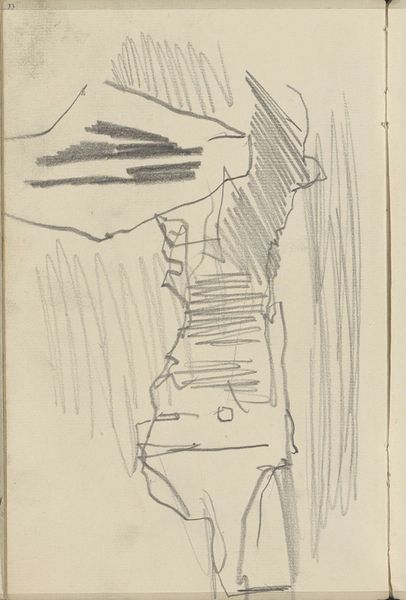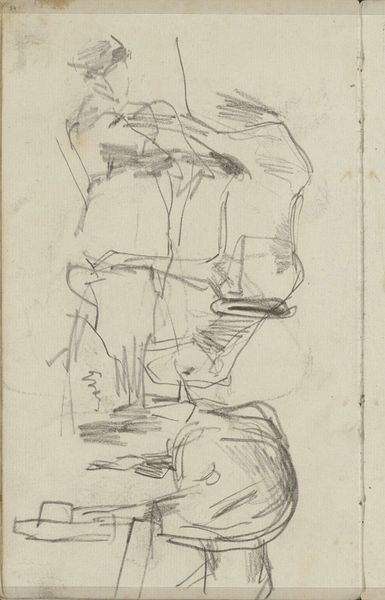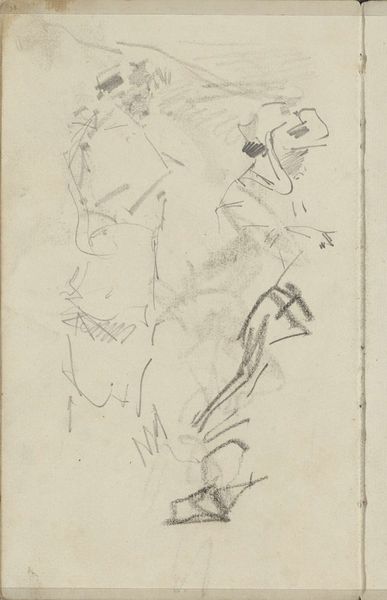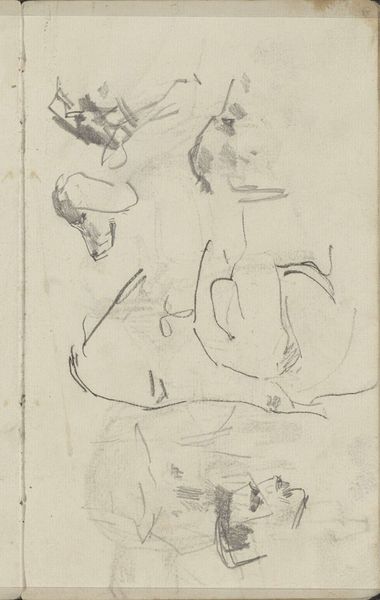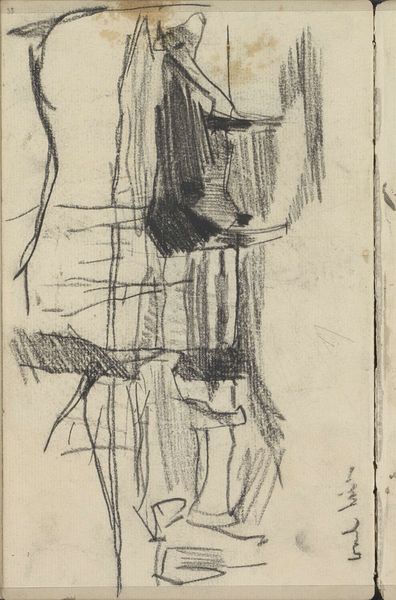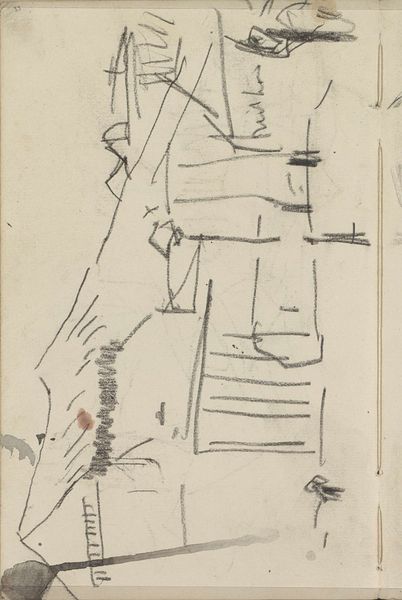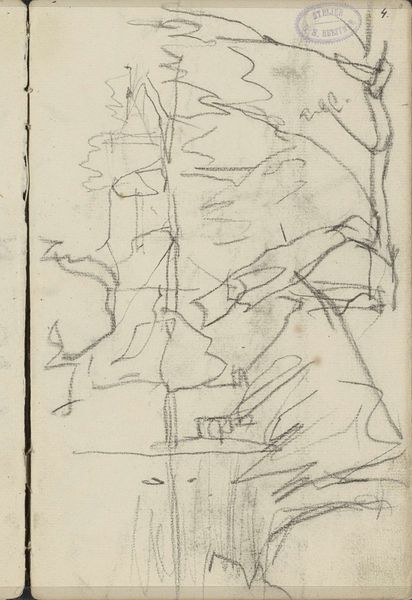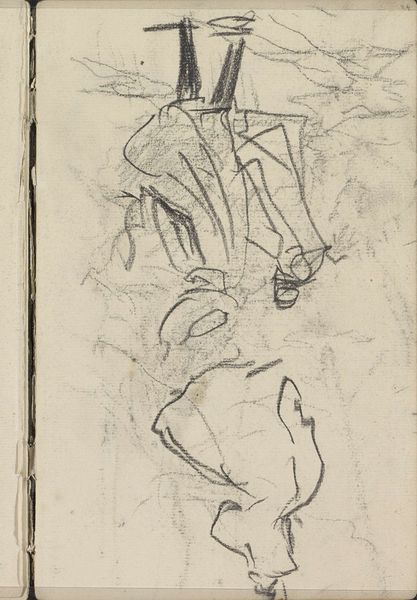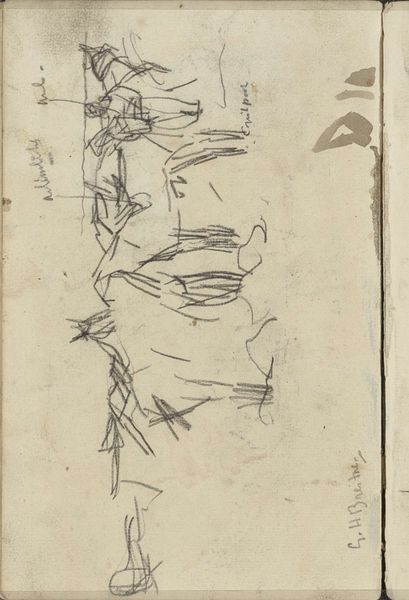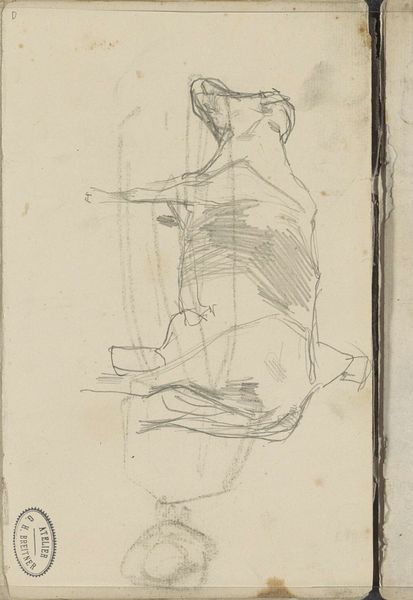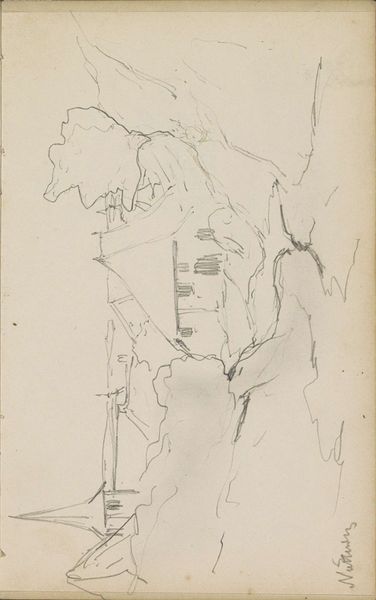
Copyright: Rijks Museum: Open Domain
Curator: This graphite drawing, called "Boot in het water," or "Boat in the Water," was sketched by George Hendrik Breitner somewhere between 1886 and 1898. It’s part of the Rijksmuseum's collection. What strikes you initially about this quick sketch? Editor: It feels incredibly fleeting, like a moment captured from a moving train. The lines are so minimal, just the barest suggestion of form, yet I sense a lot of moodiness. A sombre study, perhaps? Curator: Breitner was a keen observer of urban life. We know he wandered through Amsterdam with his camera and sketchbook. His intention was to capture the energy of the everyday, and it resonates with the Impressionists' approach. His photographs were often used as studies, of course. This sketch seems like a quick study of working life alongside Amsterdam's waterways. Editor: That makes sense. It has the quality of an immediate response. Thinking about those canals, and life happening along them, it places the piece within its social context. Was this boat just a commonplace sight then? Breitner wasn’t trying to paint "beauty", more like trying to convey the rhythm of a working city? Curator: Exactly. While Breitner mingled with some impressionists, he diverged quite a bit with his rejection of aesthetic principles in pursuit of something truly representative. What some consider unfinished, or mere studies, really demonstrates Breitner's dedication to realism above all. You can almost imagine the hustle and bustle of the harbour and the daily activities centered around boats just like this one. Editor: The rough quality of the graphite on paper also speaks to that gritty, workaday world. No idealization, only the present truth of it. There's a strong connection between this style, his choices, and the world around him. To Breitner, was it an act of resistance against academic painting? Curator: He indeed moved away from the strict traditions, reflecting social changes. Realism was rising and gaining momentum. I see him capturing modernity’s raw essence, a world that wasn't always picture-perfect. The piece highlights this shift in how art engages with everyday realities. Editor: I appreciate how even a seemingly simple sketch opens up dialogues about art's role in reflecting societal change and valuing different perspectives. It shows that observation is valuable as resistance to an elite perception of art and life. Curator: Absolutely, this drawing provides invaluable insight into how art reflects, shapes, and responds to social and cultural currents, showcasing the impact of a city's everyday life through the lens of a keen observer.
Comments
No comments
Be the first to comment and join the conversation on the ultimate creative platform.
